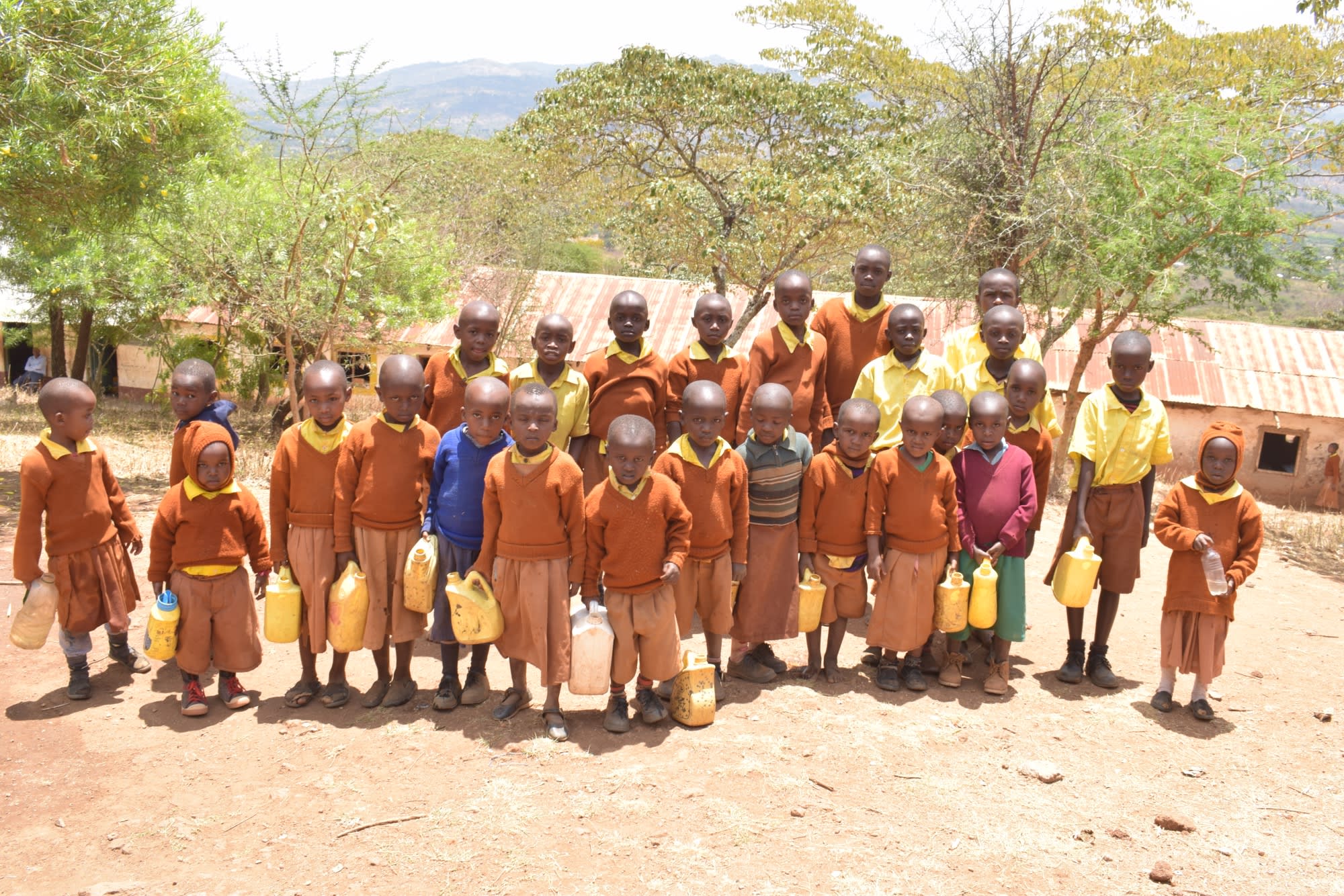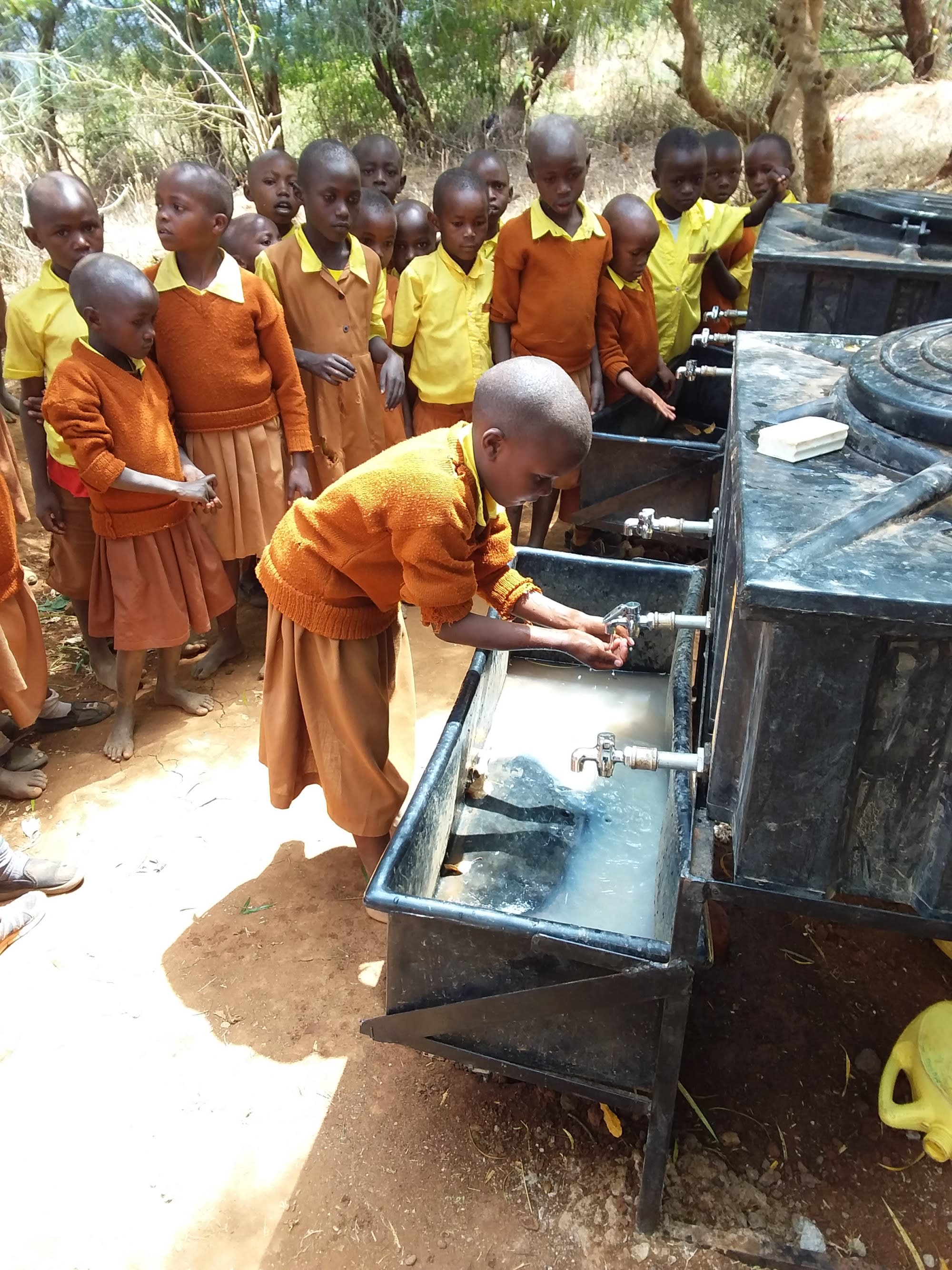Every school day, the 313 students at Maviume Primary School arrive by 7 am ready for school. Books are in one hand as the other holds a container full of water. Since there is no reliable source of water at the school, the students must bring water each day that is gathered from scoop holes at the Kikuu River, which is more than two kilometers from most households.
This places an extra burden on the learners who also carry a school bag and at times firewood. This has led to tiredness and poor concentration levels in the class.

Cases of waterborne diseases have been reported among pupils. It is caused by the fact that the water they drink is obtained from an open and unsafe source. The school's plan to start a boarding wing has been greatly hampered by the inadequate water supply. Furthermore, the feeding program at the school faces numerous water challenges leading to disruptions in school routine. This has contributed to the loss of much needed academic time due to the fact that students are both not getting the nutrition they need and often are sent out to fetch water when there is a shortage.
"Our school has suffered numerous water challenges. Pupils and parents are involved in fetching water for the school which should not be the case," said Headteacher Benjamin Kasimu.
Here’s what we’re going to do about it:
Rainwater Catchment Tank
We will build a 104,000-liter rainwater catchment tank for this school. This water will benefit the students, teachers, and supplementary staff. Parents will mobilize the materials needed for construction, such as sand and stone. They will also lend some strong arms to help with the actual construction.
The huge capacity of this tank makes the others look tiny in comparison; 104,000 liters should be enough water to carry students and staff through the entire dry season. As soon as the tank has time to cure, it can begin to collect rainwater for drinking, cooking, and cleaning!
Training
Students and staff will be trained for one day. Those in attendance will form a school health club that will promote good hygiene and sanitation practices both at school and home. They will learn all of the steps to proper handwashing, how to treat water, and how to keep their environment clean. The school will also be taught how to best oversee and maintain their new rainwater catchment tank and handwashing stations.
Handwashing Stations
Three handwashing stations will be delivered at the project’s completion. These are 1,000-liter plastic tanks fitted with four taps. The health club and school management will be responsible for making sure tanks are filled with water and that a cleaning agent such as soap or ash is available.
About the school
Maviaume Primary School was started by local community members in 1974, when one of the locals donated a piece of land for the school to be built. Finances were sourced from community members for the construction of the first classrooms.

The school is found on the slopes of Nzaui Hills in Makueni. The terrain is hilly and this peaceful rural area has little vegetation cover as the region experiences prolonged dry periods throughout the year. The majority of the buildings are made of bricks and covered with iron sheets, while some are made of just mud.
The school operates as a government facility under the Nzaui District Education Board with no formal sponsors, and has grown through the support of parents, the Makueni Constituency Development Fund, and the federal government.

 Rainwater Catchment
Rainwater Catchment
 Rehabilitation Project
Rehabilitation Project





























